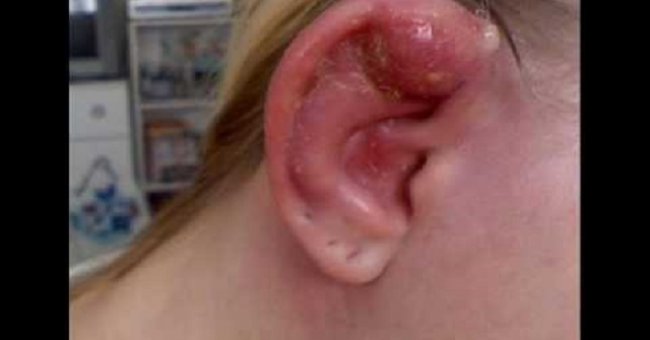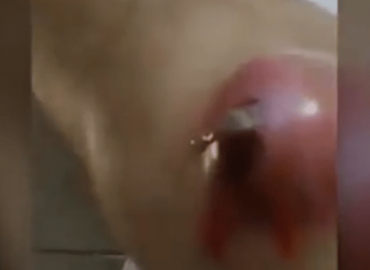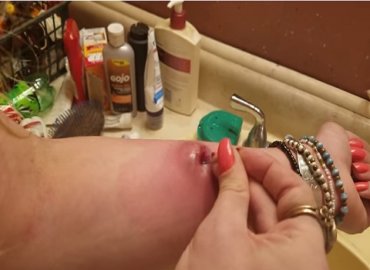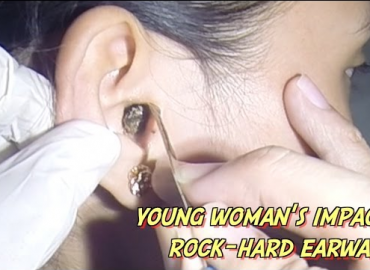When you get your ears pierced — whether at a tattoo parlor or a kiosk in the mall — you should receive instructions on how to prevent an infection. The vendor should also assure you that they only use sterile tools and hygienic practices.
But if protocol isn’t followed, or if you don’t carefully follow the post-piercing care instructions, infection can occur. You can usually treat a minor piercing infection of the earlobe fairly easily and without complications.
How you can get a piercing infection
A piercing is essentially an open wound. An earlobe piercing usually takes six to eight weeks to heal. Cartilage piercings, which take place on the harder part of your ear, generally take longer to heal and can be more prone to infection. There are several ways your ear piercing can get infected.
Any bacteria left to fester can quickly turn into an infection. If you touch your piercing with dirty hands or instruments, you can introduce an infection. If the earrings are on too tightly, not allowing room for the wound to breathe and heal, an infection can develop. A piercing can also get infected if there’s too much handling of the piercing or the post of the earring is rough.
An infection can also occur if unsterile instruments were used, if the person piercing your ears didn’t use gloves, or if the posts themselves weren’t sterile.
How to identify an infected piercing
It’s fairly easy to identify an infected ear piercing. Symptoms may include:
yellow, pus-like discharge
swelling
redness
ongoing pain or tenderness
itching and burning
Treating the infection at home
As long as your infection is minor, you may be able to take care of it at home. If you’ve had a cartilage piercing and it seems infected, seek medical treatment. These types of infections are harder to treat and may require oral antibiotics. Significant infections of the cartilage can require hospitalization.
Follow these steps to take care of a minor piercing infection:
Wash your hands before touching or cleaning your piercing.
Clean around the piercing with a saltwater rinse three times a day. (Use sterile saline or combine 1/4 tsp. of salt with 8 oz. of distilled water.)
Don’t use alcohol, hydrogen peroxide, or antibiotic ointments. These can further irritate the skin and slow the healing process.
Don’t remove the piercing. This can cause the hole to close up and trap the infection.
Clean the piercing on both sides of your earlobe. Pat the area dry with paper towels. (Other materials may leave behind fibers.)
After the infection appears to have cleared, continue this cleaning regimen twice a day until the piercing is totally healed. Remember, an earlobe piercing can take six to eight weeks to heal. Routine care is important during that time.
When you should see a doctor
Usually, a minor infection of an ear piercing can be treated successfully at home. But if any of the following symptoms occur, seek medical attention:
The earring doesn’t move.
The earring clasp becomes embedded in your skin.
The infection doesn’t improve with home treatment within two days.
You develop a fever.
The infection, or redness and inflammation, spreads beyond the piercing site.
How to prevent an infection
To avoid infection, have your ears pierced by a professional. Don’t do it at home. Be sure to ask about their infection prevention protocol. Also ask if their tools are sterile. Confirm that the earrings they use come out of a new, sterile package.
After you get the piercing, clean your ears twice a day with the rinse provided or sterile saline. Don’t turn your jewelry, as this can create trauma to the skin and cause infection. You can clean around the piercing without removing the earring.
While it’s tempting, avoid excessive handling or playing with the jewelry. This is a common way infection starts.
Getting your ears pierced should involve a few moments of pain in exchange for the chance to dress up your earlobes and have some fun. When an infection strikes, treating it promptly ensures faster healing with fewer complications.







